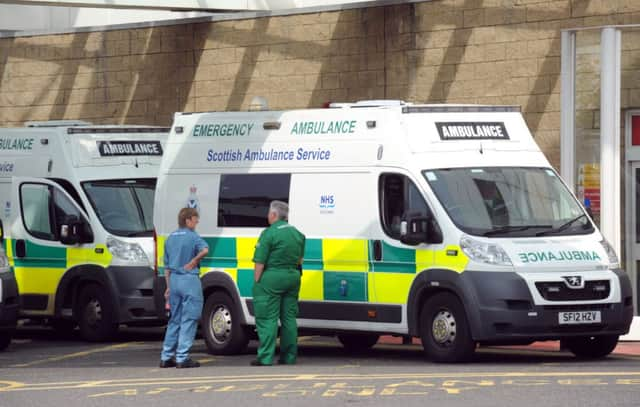How hospitals can damage stroke victims’ health


Despite improvements in the last year, only 34 per cent of patients were given clot-busting drugs within an hour of arrival last year, compared to a target of 80 per cent.
The audit report also revealed wide variations between hospitals in their performance.
Advertisement
Hide AdAdvertisement
Hide AdThe auditors concluded: “The quality of stroke services still varies across Scotland. No hospital meets all the Scottish stroke care standards, so all need to try to improve stroke services.”
The Stroke Association said stroke was still the third most common cause of death in Scotland and the significant variations in treatment and care depending on where people lived were “unacceptable”.
The guidelines include a target for at least 80 per cent of patients to receive their first thrombolysis – a drug to break up clots in the blood vessels – within an hour of arriving at hospital.
While it is not a cure, and only helps those whose condition has been caused by a clot, it can help reduce disability.
Overall, performance against the standard increased from 29 per cent in 2012 to 34 per cent last year.
In those hospitals where data was available, performance varied from 74 per cent at Crosshouse Hospital in Kilmarnock to just 6 per cent at the Southern General in Glasgow and Raigmore in Inverness.
There was also low performance against a standard for at least 80 per cent of patients to undergo a carotid endarterectomy – surgery to clear narrowed blood vessels in the neck that could cause further strokes – within 14 days of their stroke.
Overall, performance was 42 per cent, ranging from 68 per cent at Ninewells in Dundee to 7 per cent at Dumfries and Galloway Royal Infirmary.
Advertisement
Hide AdAdvertisement
Hide AdStandards also state that 90 per cent of patients with a stroke should be admitted to a stroke unit on the day they come to hospital or the day after.
Twelve hospitals exceeded the 90 per cent standard, but performance fell as low as 38 per cent at Glasgow’s Victoria Infirmary.
At least 90 per cent of patients should also have a brain scan within 24 hours of coming into hospital.
Andrea Cail, Scotland director for the Stroke Association said: “The Stroke Association is pleased to see that, once again, overall improvements are being made in most of the health boards in Scotland.
“However, the Scottish Stroke Care Audit report acknowledges that there are still wide variations in service and treatment across the country.”
A Scottish Government spokeswoman said the audit showed a 10 per cent improvement in 2013 in delivering the key elements of stroke care.
“However, there is still more to be done and our action plan sets out a comprehensive programme for further reducing the number of deaths from both heart disease and stroke.”